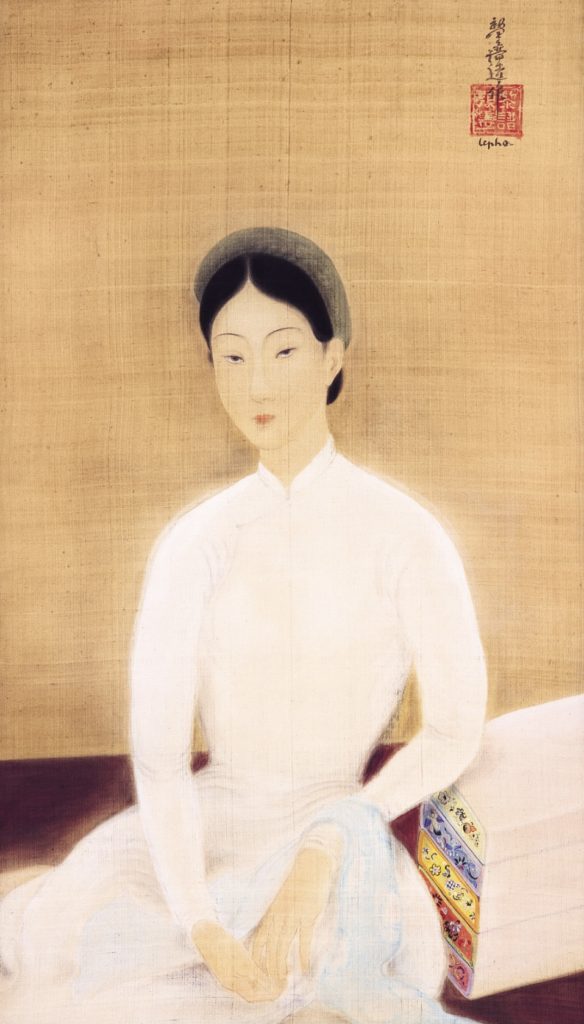Le Pho « La Jeune Fille en Blanc », 1931-32, or the memory that doesn’t fade
“Jeune fille en Blanc” (Young Girl in White) is an exceptional work by Le Pho : historically, intellectually, artistically.
When Le Pho painted this work in 1931 or 1932, he was around one year into his career after graduating with the first group of students to have attended this extraordinary nursery of talent, the Ecole des Beaux-Arts de L’Indochine (Indochina Fine Arts school) under the aegis of Victor Tardieu.

Le Phos’ talent was recognised by all : institutions consecrated him, Tardieu chose him as his right-hand man for the 1931 “Colonial Exhibition” in Paris, and Vietnam’s most important newspaper, “L’Indochine” (5 February 1930) cites him as “a true painter”.
His compositions, whether oil on canvas, lacquers (rare, due to his allergy to lacquer itself) or – his gouaches and inks on silk, were all extremely well received.
Here, Le Pho provided us with a unique masterpiece.
The “girl” takes up the entire canvas ; her long silhouette is made even more striking by the background which the artist has left bare, which testifies to the early works of the painter. Nothing is superfluous : only the model counts. Her jet black hair, surrounding an impenetrable face, fades the traditional Tonkinese headdress. Her hands appear nearly abandoned. The strict white ao dai falls into folds in its lower part which could be taken for clouds in the sky upholding a divinity. Only a muti-coloured cushion punctuates the painting with polychrome ; a fine, muted blue scarf also softens the composition.
This girl does not have the impersonal face of all later compositions by Le Pho ; no decoration competes with her. Her face is central, enigmatic but identifiable : this is a portrait.
A portrait ?
I was consulting the painter in 2001, as I did systematically in order to learn more about his work and his life. That day, tears rose to the artist’s eyes as he declared, “I have never forgotten her.” Emotion, reserve, respect, admiration, kept me from questioning the master further.
I learned the explanation at a later date. Le Pho, at the height of his seductive powers, had fallen madly in love with the most beautiful young lady in Hanoi. One day he decided to ask her father for her hand in marriage. But, as legend has it, Le Pho did not express enough respect for the father of his beloved. He was refused and the “jeune fille” ( young girl) remained in the family fold. From that moment on, the Hanoian bourgeoisie would never see this beauty dressed in any other colour than white. Could it be that she chosen to do so for its traditional symbolism ; namely, mourning ?
Sent away by the father of his beloved, Le Pho as in an intuition, returned home and painted this work, a “requiem” to his love and an absolute masterpiece.
Was Le Pho acquainted with his contemporary, the poet Xuan Dieu (1916-1985) who also distinguished himself by breaking with traditional syntax ? Both men knew that solitude is the only means to acquire liberty. Both could hear :
« If you do not stay, my heart will be solitary,
Stay near me ! Here is the pillow,
On my arm, lean on it in your intoxicated state. »
Jean-François Hubert